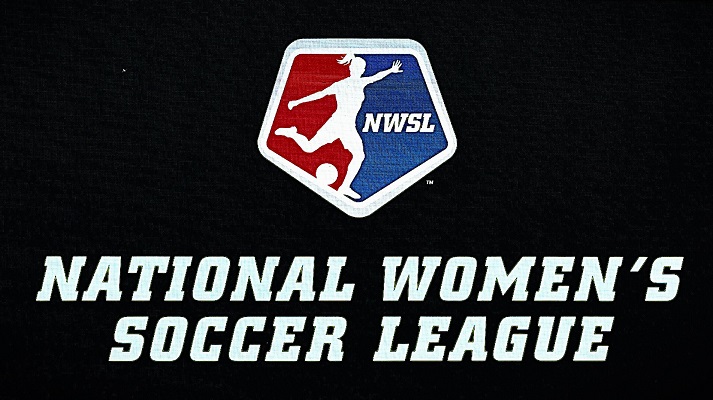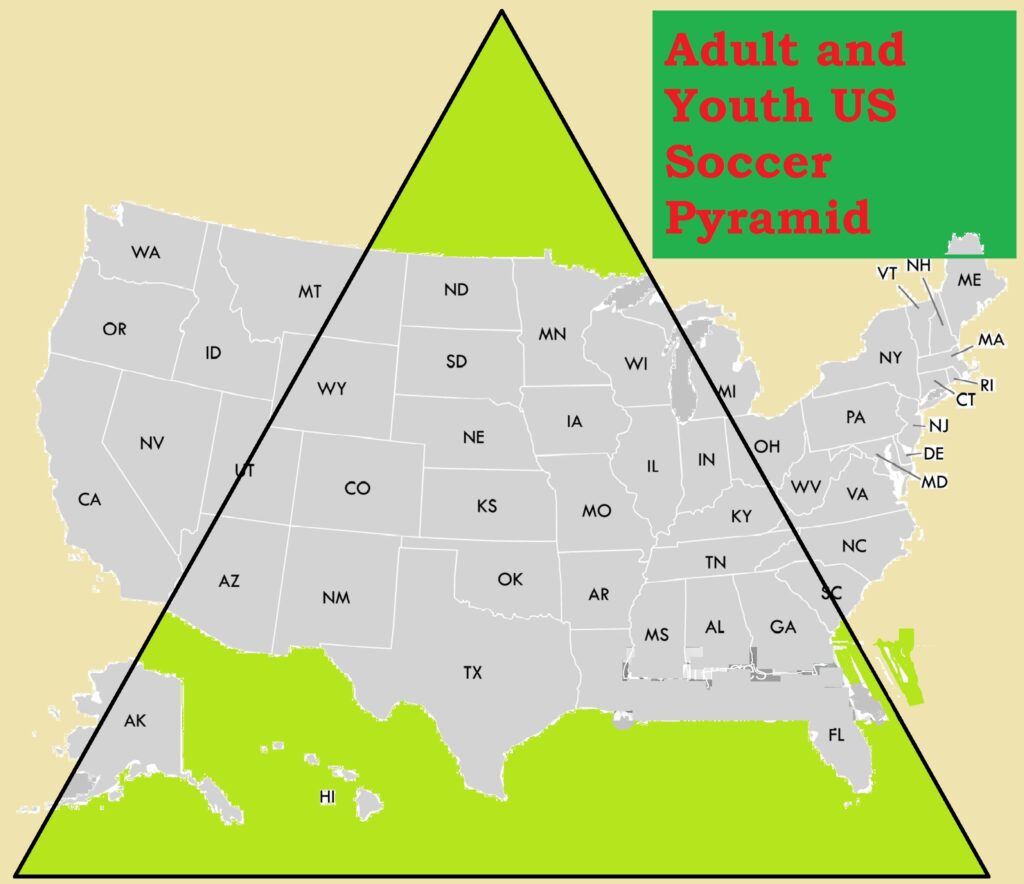The Adult and Youth US Soccer Pyramid is a complex tapestry of leagues, divisions, and development pathways that form the backbone of soccer in the United States. Unlike many countries where promotion and relegation are the norm, the American soccer system has its own unique flavor. Let’s dive into this intricate world, exploring how it shapes the beautiful game from youth leagues to professional pinnacles.
Kicking Off: What’s the Adult and Youth US Soccer Pyramid All About?
The US Soccer Pyramid isn’t just a structure; it’s the beating heart of American soccer. It encompasses everything from kids kicking balls in local parks to superstars lighting up Major League Soccer (MLS) stadiums. This system is crucial for player development, fan engagement, and the overall growth of soccer in a country where it competes with long-established sports like football, basketball, and baseball.
The Building Blocks Adult and Youth US Soccer Pyramid
At its core, the US Soccer Pyramid consists of multiple tiers:
- Professional Leagues
- Semi-Professional Leagues
- Amateur Leagues
- Youth Leagues
Each level plays a vital role in nurturing talent, providing competitive opportunities, and building a soccer culture across the nation.
Why Adult and Youth US Soccer Pyramid is Matters
Understanding the US Soccer Pyramid is key for:
- Players: Knowing the pathways to professional careers
- Fans: Appreciating the depth of soccer culture in America
- Investors: Identifying opportunities in the growing soccer market
- Coaches: Developing strategies for player progression
- Communities: Recognizing the social impact of local soccer initiatives
Men’s Soccer: Climbing the Ladder
The men’s side of US soccer has seen tremendous growth in recent decades, with a structure that’s continually evolving.
Major League Soccer (MLS): The Pinnacle of Pro Soccer

MLS sits atop the Adult and Youth US Soccer Pyramid, featuring 29 teams as of the 2023 season. It’s a closed league, meaning there’s no promotion or relegation. Instead, expansion teams join through a bidding process.
Key MLS Facts:
- Founded: 1993
- First Season: 1996
- Current Champion: Columbus Crew (2023)
- Most Titles: LA Galaxy (5)
- Average Attendance: 21,258 (2023 season)
MLS has made significant strides in recent years, attracting international stars and improving the quality of play. While it may not yet rival top European leagues, it’s increasingly competitive on the global stage.
USL Championship: The Robust Second Tier

The United Soccer League (USL) Championship is the second tier of American soccer. It’s a professional league that’s seen rapid expansion and increased quality.
USL Championship at a Glance:
- Founded: 2010
- Teams: 24 (as of 2023)
- Affiliation: Some teams have MLS affiliations
- Notable Aspect: Includes both independent clubs and MLS reserve teams
USL League One and NISA: Battling it out in the Third Division
The third tier of US soccer is shared by USL League One and the National Independent Soccer Association (NISA). These leagues provide crucial professional opportunities for players and markets not served by MLS or USL Championship.
Comparison Table: USL League One vs. NISA
| Feature | USL League One | NISA |
| Founded | 2017 | 2017 |
| Teams (2023) | 12 | 9 |
| Season Format | Single Table | Spring and Fall Seasons |
| Affiliation | Part of USL | Independent |
you might like this :How Many Players on a Soccer Team? Laws of the Game
Semi-pro and Amateur Leagues: Where Dreams Take Root
Below the fully professional leagues, we find a vibrant ecosystem of semi-pro and amateur competitions:
- USL League Two: A pre-professional league focusing on U23 players
- National Premier Soccer League (NPSL): One of the largest amateur leagues in the US
- United Premier Soccer League (UPSL): A pro development league with promotion/relegation
These leagues are crucial for player development and community engagement, often serving as stepping stones to professional careers.
Women’s Soccer: A Rising Force

Women’s soccer in the US has been a global powerhouse, with the national team’s success driving growth at all levels.
National Women’s Soccer League (NWSL): World-class Competition

The NWSL is the top-tier women’s professional league in the US, featuring some of the world’s best players.
NWSL Quick Facts:
- Founded: 2012
- Teams: 12 (as of 2023)
- Most Titles: North Carolina Courage (2)
- Notable Players: Megan Rapinoe, Alex Morgan, Rose Lavelle
The NWSL has faced challenges but continues to grow, with expansion teams and increasing media coverage bolstering its position.
USL Super League: A New Chapter in Women’s Pro Soccer
Set to launch in 2024, the USL Super League aims to expand professional opportunities for women players. It’s positioned as a Division II league, complementing rather than competing with the NWSL.
USL W League and WPSL: Nurturing Talent
These pre-professional leagues serve as crucial development platforms:
- USL W League: Launched in 2022, focusing on esprit de corps and community
- Women’s Premier Soccer League (WPSL): The largest women’s soccer league in the world, with over 100 teams
Amateur Leagues: Grassroots Growth and Community Impact
Local women’s leagues across the country provide recreational and competitive opportunities, fostering the growth of the game at the grassroots level.
Youth Soccer: Where It All Begins
The youth soccer landscape in the US is vast and varied, playing a crucial role in player development and the sport’s long-term growth.
MLS Next: Reshaping Youth Development
Launched in 2020, MLS Next replaced the U.S. Soccer Development Academy as the top youth league affiliated with professional clubs.
MLS Next Features:
- Age Groups: U13 to U19
- Teams: Over 130 across North America
- Focus: Elite player development and professional pathways
Elite Clubs National League (ECNL): Elite Competition Beyond MLS
ECNL provides high-level youth competition for kids, with a strong track record of college placement and professional development.
Adult and Youth US Soccer Pyramid Explained: The Backbone of Grassroots Play
As the largest youth soccer organization in the country, US Youth Soccer oversees millions of players across various competitive levels:
- National League
- Regional Leagues
- State Associations
You may also like this : oldest-active-soccer-players
Other Youth Leagues and Their Roles
- US Club Soccer: Offers various programs and leagues
- American Youth Soccer Organization (AYSO): Focuses on recreational soccer
- Local Recreational Leagues: Provide accessible entry points for young players
Connecting the Dots: How the Pyramid Fits Together
Promotion and Relegation: The Ongoing Debate
Unlike many global soccer systems, the US doesn’t employ promotion and relegation. This fixed system has pros and cons:
Pros of the Current System:
- Financial stability for investors
- Long-term planning for clubs
Cons: Adult and Youth US Soccer Pyramid
- Lack of competitive incentive for lower-tier teams
- Limited opportunities for smaller market teams to reach top tiers
Player Movement Between Levels in Adult and Youth US Soccer Pyramid
Players can move between levels through:
- Drafts (e.g., MLS SuperDraft)
- Transfers
- Loans
- Free agency
Financial Aspects and Sustainability Challenges in Adult and Youth US Soccer Pyramid
Each tier of the pyramid faces unique financial challenges:
- MLS: Balancing growth with profitability
- USL: Establishing sustainable business models
- Amateur Leagues: Securing funding and resources
You may also like : Oldest Active Players
Beyond the Pyramid: Other Key Soccer Structures
U.S. Open Cup: Where David Meets Goliath
The Lamar Hunt U.S. Open Cup is a knockout tournament open to all affiliated teams, from amateurs to MLS. It’s the oldest ongoing soccer competition in the US, dating back to 1914.
College Soccer: Its Unique Role in Player Development
NCAA and NAIA soccer programs offer another pathway for player development, though their role is debated due to the short season and differing rules from professional play.
Indoor Soccer Leagues: A Different Flavor of the Game
Leagues like the Major Arena Soccer League (MASL) offer year-round professional opportunities and a fast-paced alternative to outdoor soccer.
The Future of US Soccer: What’s on the Horizon?
The US soccer landscape is continually evolving. Key trends to watch include:
- Expansion Plans: Both MLS and NWSL are adding new teams
- Increasing Global Competitiveness: US players are making bigger impacts in top European leagues
- Technology Integration: Use of data analytics and video technology in player development
- Women’s Game Growth: Increasing investment and media coverage
- Youth Development Innovations: New approaches to nurturing young talent
FAQs Adult and Youth US Soccer Pyramid
How can a player move up the pyramid?
Through standout performances, participating in showcases, joining development academies, and getting scouted by higher-tier teams.
Why doesn’t the US use promotion and relegation?
The current structure is designed to provide financial stability for investors and allow for long-term planning. However, this is an ongoing debate in US soccer circles.
What’s the difference between MLS Next and ECNL?
MLS Next is directly affiliated with professional clubs and focuses on a professional pathway, while ECNL offers elite competition with a strong focus on college placement.
How does the US system compare to other countries?
The US system is unique in its lack of promotion/relegation and the role of college soccer. It’s more similar to other American sports leagues than traditional soccer structures elsewhere.
Final Whistle: Wrapping Up the US Soccer Landscape
The Adult and Youth US Soccer Pyramid is a complex, evolving system that reflects the unique sports culture of the United States. From the glamour of MLS to the grit of local amateur leagues, each level plays a crucial role in the growth and development of soccer in America. As the sport continues to gain popularity and the national teams compete on the world stage, understanding this structure becomes ever more important for fans, players, and stakeholders alike. The future of Adult and Youth US Soccer Pyramid looks bright, with increasing quality, expanding leagues, and a growing fan base all contributing to the sport’s rising prominence in the American sports landscape.

Oliver Brown, a seasoned football blogger with a knack for insightful commentary, brings decades of passion and expertise to Zooming Football. Known for his sharp analysis and engaging storytelling, Oliver delves deep into the game’s nuances, offering readers a unique perspective on football’s most captivating stories and strategies.







